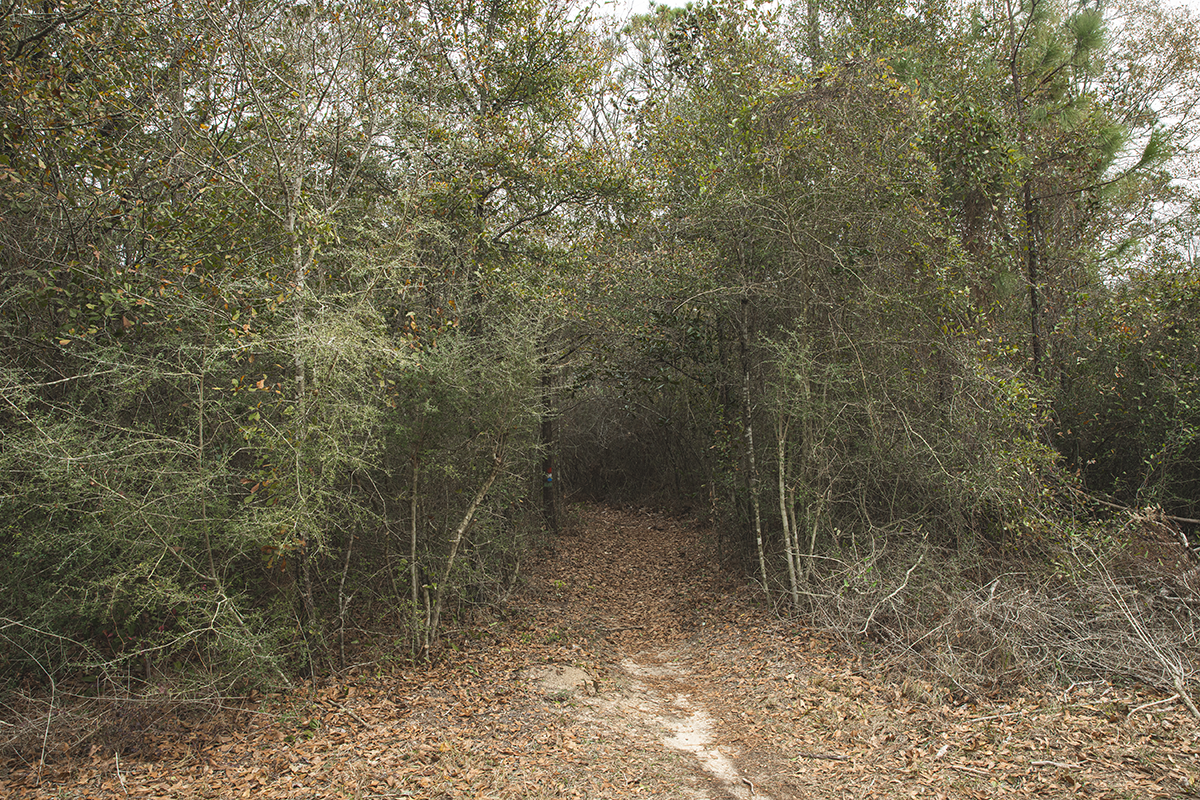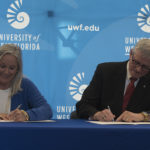UWF students use UWF conservation acreage as Living Lab to support the campus ecosystem
Updated Feb. 8, 2024:

The University of West Florida’s original campus plans emphasized preserving its natural landscape, and more than 50 years later, the University continues to protect and preserve its 1,600 acres of natural grandeur. While people are familiar with UWF’s natural beauty, many people may be unfamiliar with an important practice that UWF uses to ensure ecosystem health and reduce wildfire risk in the approximately 562 conservation acres of the west campus.
Last year, the University contracted the Forest Service of Florida Department of Agriculture and Consumer Services to mitigate wildfire hazards. Over the summer, phase one was completed when the Florida Forest Service mulched 50-foot-wide firebreaks along the boundaries of the conservation-zoned parcels and some interior lines.
“This work will significantly reduce the risk of harm should a wildfire break out,” said Chasidy Hobbs, instructor of Earth and Environmental Science and director of Conservation. “Now we are ready to begin phase two.”
Starting this month, the Archaeology Institute at UWF will provide an experiential learning opportunity for undergraduate and graduate students for the next step in the process: surveying the land for potential archaeology sites before the burns begin. Students will learn archaeological survey techniques and document their work while working with faculty.
“This involves sampling a given area,” said Dr. Ramie Gougeon, interim director of the Archaeology Institute. “Students will do a shovel test where they will dig a measured square hole and screen the dirt every 25 to 50 meters. They’ll look for artifacts and changes in the soil that might indicate human activity.”
The work, which will take several weeks, will allow the University to evaluate the integrity of the site. Should an archaeology site be found, measures would need to be taken to protect the area before burns begin. Graduate students will assist with putting together a compliance report for the state.
If the state approves of the report and prescribed burns, prescribed burns are planned for early next year. The Florida Forest Service will begin small areas of prescribed burns to remove decades’ worth of wildfire fuel and significantly reduce the risk to neighbors should a wildfire occur.
Hobbs said the wildfire risk of an area is determined by several factors, including the amount and types of vegetation present, how it is arranged in the landscape and how long it has been since a fire was in the area. Most of the areas within these parcels have no record of prescribed burns.
The low-intensity fire is launched with strategic timing in the dormant season. Without prescribed fire, this area is prone to burn, alters the natural landscape and deters new, native growth. Benefits of prescribed fire include nutritional content of regrowth greater than unburned vegetation. Fire reduces the height of vegetation on the landscape allowing smaller animals, such as tortoises, easy reach. Burns reduce hardwoods that shade the forest floor and allow for more sunlight which means more food sources at ground level.
UWF will implement the burns annually; ideally burning three to four plots per year to maintain the University’s wildlife ecosystem.



